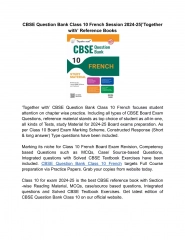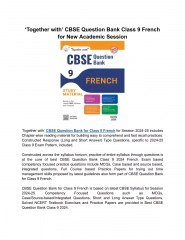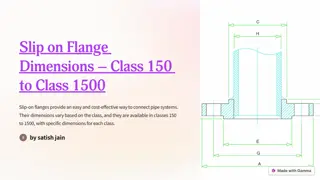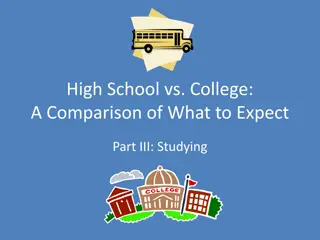
Distributed Graph Algorithms and Local Problems in Spring 2023
Explore the LOCAL model and its application in solving graph problems such as vertex coloring, maximal independent set, and maximal matching on network graphs. Understand the challenges in symmetry breaking and local coordination between neighboring nodes. Join the class to delve into distributed graph algorithms and tree coloring techniques for efficient computation in synchronous rounds.
Download Presentation

Please find below an Image/Link to download the presentation.
The content on the website is provided AS IS for your information and personal use only. It may not be sold, licensed, or shared on other websites without obtaining consent from the author. If you encounter any issues during the download, it is possible that the publisher has removed the file from their server.
You are allowed to download the files provided on this website for personal or commercial use, subject to the condition that they are used lawfully. All files are the property of their respective owners.
The content on the website is provided AS IS for your information and personal use only. It may not be sold, licensed, or shared on other websites without obtaining consent from the author.
E N D
Presentation Transcript
Distributed Graph Algorithms Spring 2023 Class 3: Local Problems & Tree Coloring
The LOCAL Model (Linial, FOCS 87) ? nodes with unique identifiers 8 5 Initially each node knows: Its ID Estimate on global parameters: E.g., number of nodes, max-degree, etc. 7 3 2 Synchronous rounds: 1. Each node/computer does some internal computation 2. Send a message to each neighbor (possibly unbounded) 3. Receive message from each neighbor Unbounded internal computation & message size
Slide by Fabian Kuhn The LOCAL Model The LOCAL Model ? Trivial upper bound: ?(???? ? ) rounds ?-Round Algorithm: Each node computes its output as a function of the initial state of its ?-neighborhood 3
Slides by Fabian Kuhn Local Graph Algorithms Objective: solve some graph problem on the network graph 12 15 9 20 21 1 8 4 11 3 16 2 17 5 At the start: Each node knows its own ID and nothing else about the topology At the end: Each node knows its part of the output (e.g., its color) Local checkability We consider graph problems where the solution can be checked locally (e.g., ?(1)-radius ball) e.g., a node can locally check whether it has a different color than its neighbors [Naor,Stockmeyer; STOC 93], [Fraigniaud,Korman,Peleg; FOCS 11] 4
Slide by Fabian Kuhn LOCAL Problems (Examples) LOCAL Problems (Examples) ? + ? -Vertex Coloring Objective: properly color the nodes with + 1 colors : maximum degree + 1 colors: what a simple sequential greedy algorithm achieves 5
Slide by Fabian Kuhn LOCAL Problems (Examples) LOCAL Problems (Examples) Maximal Independent Set (MIS) Objective: compute a maximal independent set (MIS) Non-extendible set of pairwise non-adjacent nodes Trivial to compute sequentially 6
Slide by Fabian Kuhn LOCAL Problems (Examples) LOCAL Problems (Examples) Maximal Matching Objective: compute a maximal matching Non-extendible set of pairwise non-adjacent edges A maximal matching is an MIS of the line graph 7
Challenges in the LOCAL Model Slide by Fabian Kuhn Symmetry Breaking / Local Coordination ? ? Neighboring / nearby nodes need to output different values e.g., different colors, at most one can be in an MIS, etc. Nodes need to decide in parallel Key Challenge: locally coordinate among nearby nodes randomization naturally helps (e.g., choose color at random) 8
Next: Coloring Trees with 3 Colors! Next: Coloring Trees with 3 Colors!
Coloring Rooted Trees Observation: Every tree can be colored with two colors Lower Bound [Linial, 89]: Any algorithm that colors an ?-vertex path with two colors requires ?(?)rounds 0 0 iff ?(?,?)is even ? ?
Coloring Rooted Trees with Three Colors Theorem 1 [Cole, Vishkin 86] : Every rooted tree can be colored with three colors using ?(??? ?) rounds ??? ? = min{? log?? 2} Iterated log-function: log(1)? = log ? log(2)? = loglog ? log(?+1)? = log(log??)
Lower Bounds for 3-Coloring Theorem 2 [Linial 89] : Any algorithm that 3-colors an ?-vertex oriented path requires ?(??? ?) rounds Simplified proof by [Laurinharju and Suomela 2014] Next: coloring rooted trees with 6 colors in ?(??? ?) rounds
Six-Coloring in ?(log?) Rounds Initially set ? ? = ?? ? Legal coloring with ?(????) bits [000100001] Goal: In single round, re-color vertices with ? loglog ? -bit colors [011100001] ?(??? ?)repetitions ?(?)-bit coloring
Six-Coloring Algorithm Root ? assigns ??= ? [00000000] Code for a non-root vertex ?: 1. Set ??= ??? and send to children 2. Repeat: [00101110] [00101110] (2.1) ? = ???{ ? ??? ?? ?(?)} (2.2) ??= ?,??? (2.3) Send ?? to children
Six-Coloring Algorithm Root ? assigns ??= ? ? [00000000] Code for a non-root vertex ?: 1. Set ??= ??? and send to children 2. Repeat: ? [10101110] ? (2.1) ? = ???{ ? ??? ?? ?(?)} [00101110] (2.2) ??= ?,??? (2.3) Send ?? to children Run by all nodes in parallel ??= [0011] ??= [1110]
Analysis ? ? [10101110] Correctness: In each iteration, the algorithm produces a legal coloring. ? [00101110] Proof: Consider ? and ? = ?(?). Let??,??be the indices chosen by ?,? Case 1: ?? ?? Code for a vertex ?: (2.1) ? = ???{ ? ??? ?? ?(?)} Case 2: ??= ?? (2.2) ??= ?,??? ???? ???? = ??(??)
Analysis Runtime: Within ?(??? ?)iterations, the final coloring consists of 6 colors Proof Sketch: ?? number of bits in colors after the ?th iteration ?0= log ? ?1= loglogn + 1 ?2= log k1 + 1 Observation: ??+?< ?? as long as ?? ? Once ??= ?we get 6 colors!
Reducing to Three Colors Procedure Shift-Down: 1. Each vertex adopts color of its parent 2. Root picks a free color in ?,?,? 1 0 Shift-Down 0 0 0 4 5 3 Sibling are mono-chromatic! 5 5 3 4 2 3 2 5 2 2 3 4 2 2 2 0 4 5 3 3 3 3 2 4 4 1
Reducing to Three Colors Idea: Cancel colors {3,4,5} on by one by applying Shift-Down From Six to Three Colors: For ? ?,?,?do: 1. Apply Shift-Down 2. Each vertex with color ? picks a free color in {?,?,?} Is this safe? Is this possible?
Example: Cancelling Color 5 1 1 0 Shift- Down 0 0 0 0 0 0 Cancel 5 4 5 3 5 5 1 3 4 1 3 4 2 3 2 5 2 2 2 2 3 4 2 2 2 2 2 2 0 4 5 3 3 3 3 3 3 3 3 2 4 4 1
Coloring Unoriented Trees Linial 92: Coloring a balanced ?-regular unoriented tree with less than ?/? colors requires ? log ?rounds. log ?
Many Variants of Vertex Coloring (? + ?)Coloring: Goal: Each vertex ? outputs ?? {?, ,?} (? + ?) List-Coloring: Each vertex ? has a palette ???(?)of ? + ? colors chosen from {?, ,????(?)} Goal: outputs ?? ???(?) (??? + ?)Coloring: Goal: Each vertex ? outputs ?? {?, ,???(?)}
( + 1) Coloring: State-of-the-Art Randomized complexity [Chung, Li, Pettie 2018]: ?(log3log?) rounds Deterministic complexity [Ghaffari and Kuhn, 2021]: ?(log2? log ) rounds Lower bounds: (log ?) rounds (by Linial 1989)! Some good news: ? + ? ? coloring in ??/?(??? ?) rounds (using randomization)






















